The relationship between the Pearlescent pigments and faux f
The relationship between the Pearlescent pigments and faux finishs
In 1978 the German scientist Sutanuxi faux finish (SolDanush) for the first time Mica pearl pigment used since metallic car faux finish, a great impetus to the world of automotive faux finish and coating technology progress and development. In recent years, with the Symphony of pearl pigment manufacturing high decorative coating applications Symphony pearl faux finish more and more the importance of community and the automotive industry. Especially for cars with high decorative Xingse finish, color can create a new artistic effect. Currently, Symphony pearl faux finish with a variety of different brands of car faux finishing new varieties continue to emerge in the international automotive exhibition booth and faux finish, to the majority of car enthusiasts and consumers a refreshing feeling. From an aesthetic point of view, it is the Mica-Based Pearlescent faux finish called "modern art faux finish fine chemical" and "a revolution in car faux finish" is not at all exaggerated.
This article intends to summarize the work of their predecessors and their own practice on the basis of the preceding, on how to use Symphony to create a new pearl pigment coating color artistic effects to make a superficial discussion.
2 Symphony of the structure and types of pearlescent pigments
Symphony of pearlescent pigments are mica-titanium pearlescent pigment in a series of varieties, also known as "Rainbow pearlescent pigments." Such pigment itself does not color, it shows the color produced with natural rainbow color, is a typical pseudo-color, faux finish film is multiple reflection and refraction of incident light between the results of superposition.
Symphony in the manufacture of silver pearlescent pigments are pearlescent pigments based on class, through the re-coating, and the regulation and control of titanium dioxide on mica flakes polycrystalline layers and the thickness of the membrane obtained. At present, domestic and imported Symphony pearlescent pigments based on their pseudo-color display can be divided into gold with yellow gold purple, eggplant color purple, sapphire blue and olive green five.
Meanwhile, in the Symphony of pearlescent pigment production process, with mica, titanium dioxide polycrystalline thin film on the thickness of the geometric increase in these types of pseudo-color phase between the main, may also produce a series of transitional hue Symphony pearlescent pigments. However, this transition hue Symphony pearlescent pigment in the manufacture, extremely difficult to control reaction parameters, it is difficult to ensure that titanium dioxide geometric thickness of the polycrystalline film, and thus poor reproducibility, coupled with the apparent sense of poor people, so few manufacturers as the product traded. Coated on titanium dioxide, mica flakes on the optical thickness and the thickness of the geometric relationship between the following:
a, = optical thickness of the geometric thickness / refractive index b, the refractive index of titanium dioxide: anatase is 2.52; rutile 2.71
3 Symphony of the optical properties of pearlescent pigments
Symphony of the optical properties of concentrated pearl pigments in the following five main areas:
3.1 pearl effect
Pearl effect is soft and it has pearl-like color, pearl color is coated on the mica substrate by the titanium dioxide polycrystalline films of the incident
Multiple reflection and transmission of light produce the results. For small particle size of pearlescent pigments, since the coating on the surface of mica flakes polycrystalline titanium dioxide
The internal membrane structure as natural pearls, as divided into many small layers, so that when natural light shines on the surface, it will show a similar kind of soft silk color, called the "pearl." The optical characteristics as "pearlescent effect." Pearl effect which we create art color coating pearl luster basis.
3.2 Metallic effect
In the 1920s and 1930s, the emergence of a decorative industrial metal pigments. It is through the metal pigment flakes with specular reflection of light to achieve this feature decorative purposes. Aluminum exposure in natural light, flashing blue light; copper (brass) flashing yellow light, stainless steel flashing white light; while zinc and copper alloys such as flashing a strong golden shade. The metal surface of the specular reflection of light flicker on the human eye as the sense referred to as "metallic effect", and mica-titanium pearlescent pigment just have this feature. Quality pure natural muscovite flakes through the titanium dioxide and other metal oxide coating, or color-treated, can get a metallic luster, such as: pure titanium dioxide coated mica titanium pearl pigment can show strong silvery metallic luster; silver pearlescent pigment carbon black coloring, or calcined in a reducing atmosphere so as to form titanium oxide variability, deep tones of lead can show metallic luster; with chromium oxide silver colored flashing bronze luster pearl pigments, iron oxide color magic Pearlescent pigments for strong color yellow and realistic gold gloss.
3.3 hornblende color effect
As Mica-Based Pearlescent pigments are mica flakes coated by a transparent layer of transparent, the refractive index is much higher than the mica substrate composed of metal oxides. When the light in the refractive index of the transparent interface to different light refraction and reflection occur, and some absorption, penetration effect, the parallel between the various reflected light, inevitable phenomenon of optical interference arising from Symphony. Of the observer, the line of sight in the light reflection angle, you will see the strongest interference colors, while the deviation from the angle of reflection can only see the beads Shique white or other colors. This observation with the observer's point of view and see the different colors of different interference phenomena known as "flash view color effect."
3.4 color shift effect
Symphony using interference color pearl pigment coating made of a continuous, simultaneous display of two different colors, called "color shift effect." For example: The Symphony of pearlescent pigments prepared from the pearl faux finish car faux finish, car body with its color will change in the curvature, color transfer effects were changed to blue and orange ground; change from yellow to purple. That is reflected from the pearl pigment discoloration Symphony to its complementary color. It is because of specific mica titanium pearl pigment color transfer effect, it is possible according to different needs, design and create all kinds of wonderful and fantastic decorative effect.
3.5 Additional color effect
Mica pearl pigment with transparent organic and inorganic pigments to match with, or directly with these pearlescent pigments for coloring pigments, the resulting color is more attractive. Such as copper phthalocyanine blue, green; transparent iron oxide red hue of the Symphony with the same mixed pearlescent pigments, the color is not only not weaken, but will also increase. This is the unique pearlescent pigments "Additional color effect", also known as "hyperchromic effect." We know that a class of conventional aluminum metal pigment is one of the greatest drawback: once it is mixed with the resin, the color saturation will occur substantially attenuated, so that the color becomes dark and dim. However, after the faux finish color pearlescent pigments or by the construction of the coating after it will become more vivid colors, bright.
 世贸公寓-仿砂岩漆工程
世贸公寓-仿砂岩漆工程 欧陆经典-仿砂岩漆工程
欧陆经典-仿砂岩漆工程 棕榈泉公寓-仿砂岩漆工
棕榈泉公寓-仿砂岩漆工 马格瑞漆058
马格瑞漆058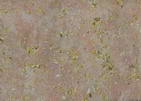 马可艺术肌理漆059
马可艺术肌理漆059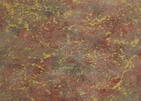 马可艺术057
马可艺术057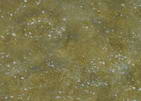 马可艺术056
马可艺术056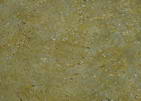 马可涂料055
马可涂料055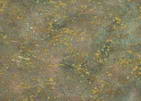 马可涂料053
马可涂料053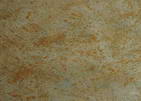 马可涂料052
马可涂料052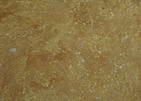 马可漆051
马可漆051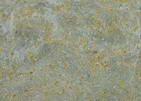 马可艺术漆050
马可艺术漆050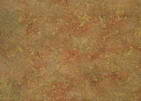 马可艺术涂料049
马可艺术涂料049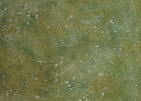 马可漆048
马可漆048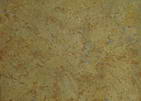 马可涂料047
马可涂料047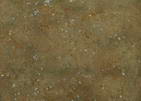 马可涂料046
马可涂料046 马可涂料045
马可涂料045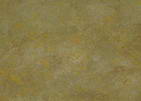 马可涂料044
马可涂料044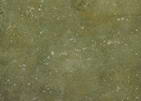 意大利马可漆042
意大利马可漆042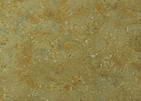 马可艺术漆041
马可艺术漆041 釉面艺术涂料29
釉面艺术涂料29 釉面艺术涂料28
釉面艺术涂料28 釉面艺术涂料26
釉面艺术涂料26 釉面艺术涂料27
釉面艺术涂料27 釉面艺术涂料25
釉面艺术涂料25 釉面艺术涂料24
釉面艺术涂料24 釉面艺术涂料23
釉面艺术涂料23 釉面艺术涂料22
釉面艺术涂料22